Scientific name Papaver rhoeas Rank Species | Genus Papaver | |
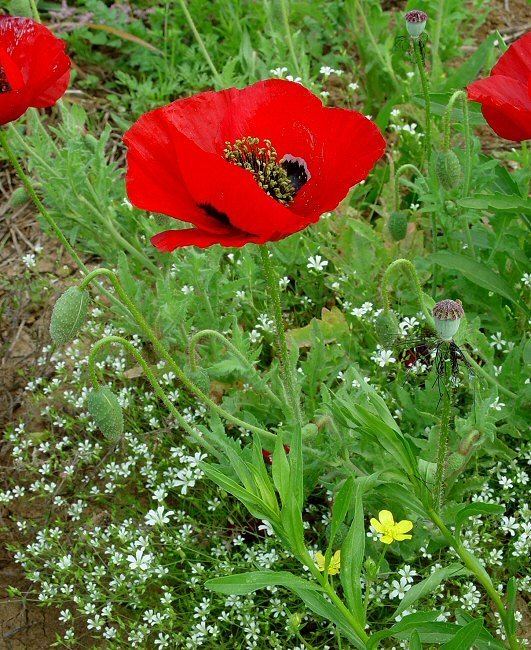 | ||
Similar Poppy, Opium poppy, Cornflower, Papaveraceae, Tulip | ||
Papaver rhoeas (common names include common poppy, corn poppy, corn rose, field poppy, Flanders poppy or red poppy) is an annual herbaceous species of flowering plant in the poppy family, Papaveraceae. This poppy is notable as an agricultural weed (hence the common names including "corn" and "field") and after World War I as a symbol of dead soldiers.
Contents
- Corn rose papaver rhoeas corn poppy 2012 05 19
- Description
- Taxonomy
- Natural history
- Cultural usage
- Persian literature
- Urdu literature
- Uses
- References

Before the advent of herbicides, P. rhoeas sometimes was so abundant in agricultural fields that it could be mistaken for a crop. However, the only species of Papaveraceae grown as a field crop on a large scale is Papaver somniferum, the opium poppy.
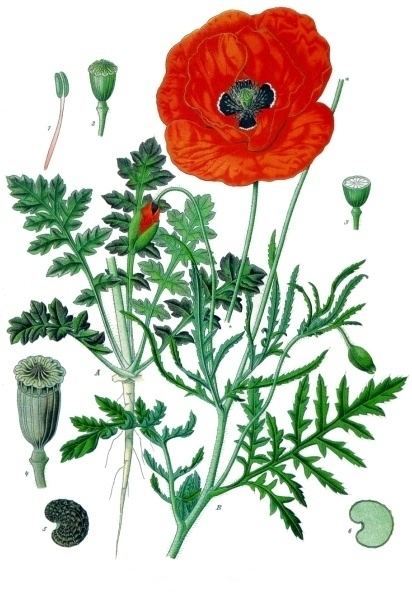
Corn rose papaver rhoeas corn poppy 2012 05 19
Description
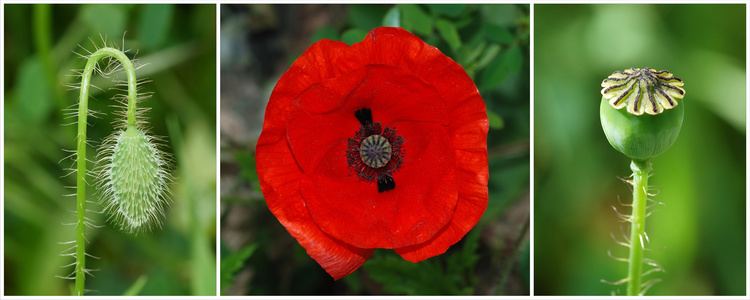
Papaver rhoeas is a variable, erect annual, forming a long-lived soil seed bank that can germinate when the soil is disturbed. In the northern hemisphere it generally flowers in late spring, but if the weather is warm enough other flowers frequently appear at the beginning of autumn. It grows up to about 70 cm in height. The flowers are large and showy, 50 to 100mm across, with four petals that are vivid red, most commonly with a black spot at their base. The flower stem is usually covered with coarse hairs that are held at right angles to the surface, helping to distinguish it from Papaver dubium in which the hairs are more usually appressed (i.e. held close to the stem). The capsules are hairless, obovoid (egg-shaped), less than twice as tall as they are wide, with a stigma at least as wide as the capsule. Like many other species of Papaver, the plant exudes white to yellowish latex when the tissues are broken.
Taxonomy
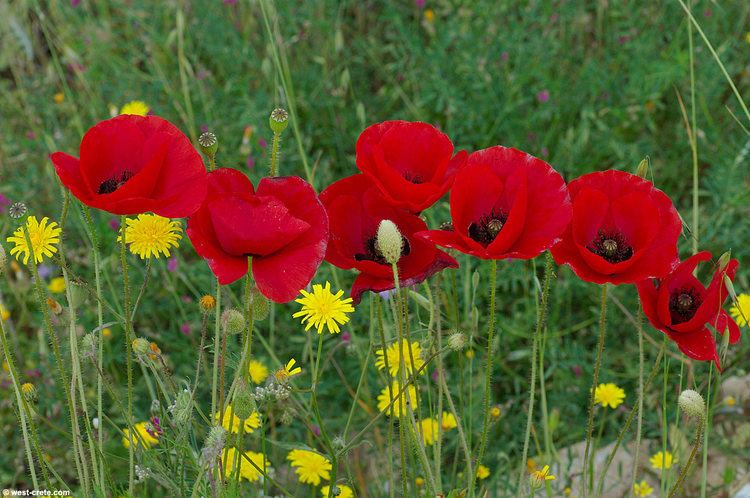
It was formerly described by the Swedish botanist Carl Linnaeus in his seminal publication Species Plantarum in 1753. Papaver, also ‘pappa’, is the Latin word for food or milk and 'rhoeas' means red in Greek.
Natural history

Its origin is not known for certain. As with many such plants, the area of origin is often ascribed by Americans to Europe, and by northern Europeans to southern Europe. Its native range includes West Asia, North Africa and Europe. It is known to have been associated with agriculture in the Old World since early times and has had an old symbolism and association with agricultural fertility. It has most of the characteristics of a successful weed of agriculture. These include an annual lifecycle that fits into that of most cereals, a tolerance of simple weed control methods, the ability to flower and seed itself before the crop is harvested, and the ability to form a long-lived seed bank. The leaves and latex have an acrid taste and are mildly poisonous to grazing animals.
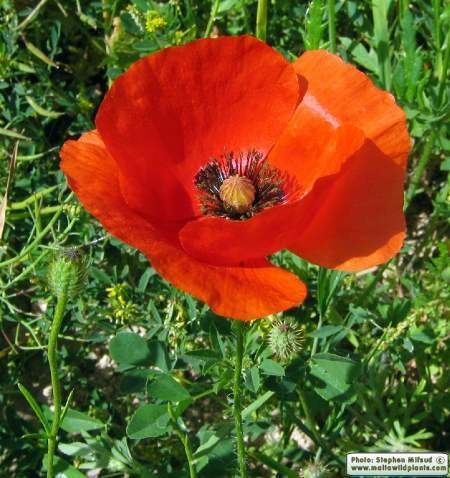
A sterile hybrid with Papaver dubium is known, P. x hungaricum, that is intermediate in all characters with P. rhoeas.
Cultural usage
Due to the extent of ground disturbance in warfare during World War I, corn poppies bloomed in between the trench lines and no man's lands on the Western front. Poppies are a prominent feature of "In Flanders Fields" by Canadian Lieutenant Colonel John McCrae, one of the most frequently quoted English-language poems composed during the First World War. During the 20th century, the wearing of a poppy at and before Remembrance Day each year became an established custom in English-speaking western countries. It is also used at some other dates in some countries, such as at appeals for Anzac Day in Australia and New Zealand.
This poppy appears on a number of postage stamps, coins, banknotes, and national flags, including:
The common or corn poppy was voted the county flower of Essex and Norfolk in 2002 following a poll by the wild plant conservation charity Plantlife.
Persian literature
In Persian literature, red poppies, especially red corn poppy flowers, are considered the flower of love. They are often called the eternal lover flower. In classic and modern Persian poems, the poppy is a symbol of people who died for love (Persian: راه عشق).
Many poems interchange 'poppy' and 'tulip' (Persian: لاله).
[I] was asking the wind in the field of tulips during the sunrise: whose martyrs are these bloody shrouded?[The wind] replied: Hafez, you and I are not capable of this secret, sing about red wine and sweet lips.Urdu literature
In Urdu literature, red poppies, or "Gul-e-Lalah", are often a symbol of martyrdom, and sometimes of love.
Uses
The commonly grown garden decorative Shirley Poppy is a cultivar of this plant.
P. rhoeas contains the alkaloid rhoeadine which is a mild sedative. The black seeds are also edible, and are eaten either on their own or as an ingredient in bread. Oil made from the seed is highly regarded in France.
The petals contain a red dye which is used in some medicines and wines, also the dried petals are occasionally used to give colour to potpourris.
